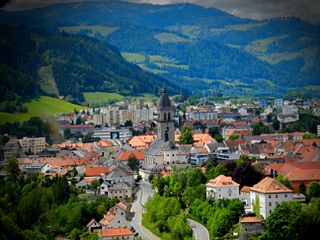
Judenburg is a historic town in Styria, Austria.

St. Lambert's Abbey is a Benedictine Abbey in the village of Sankt Lambrecht in the Styrian Grebenzen nature reserve in Austria. The monastery is located 1,072 m (3,517 ft) above sea level. The monastery complex and its gardens are part of the Zirbitzkogel-Grebenzen nature park.

Mauterndorf is a market town of the Tamsweg District in the Austrian state of Salzburg. The municipality also comprises the Katastralgemeinden Faningberg, Neuseß and Steindorf.

Bezirk Murau is a district of the state of Styria in Austria.

Thörl is a market town at the foot of the Hochschwab in the Styrian district of Bruck-Mürzzuschlag.

Tamsweg is a market town in the Austrian state of Salzburg near the border with Styria. It is the administrative centre of the eponymous Tamsweg District (Bezirk) and the largest town of the Salzburg Lungau region.
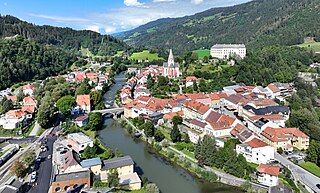
Murau is a town in the western part of the Austrian federal state of Styria. It is the administrative seat of Murau District.
Sankt Ruprecht-Falkendorf is a small village of about 534 inhabitants in the District Murau, Styria in central Austria. It was created on 1 January 2005 by the fusion of Falkendorf and Sankt Ruprecht ob Murau. Since the 2015 Styria municipal structural reform, it is part of the municipality Sankt Georgen am Kreischberg.

Albeck is a municipality in the district of Feldkirchen in the Austrian state of Carinthia.
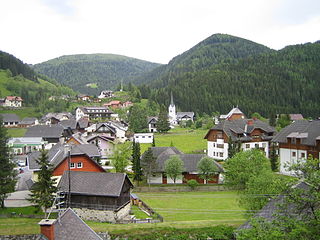
Reichenau is a municipality in the district of Feldkirchen in the Austrian state of Carinthia.

Griffen is a market town in the district of Völkermarkt in the Austrian state of Carinthia.
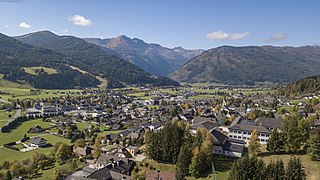
St. Michael im Lungau is a market town in the district of Tamsweg in the Austrian state of Salzburg.

Obdach is a municipality in the district of Murtal in Styria, Austria.

Laßnitz bei Murau is a former municipality in the district of Murau in Styria, Austria. Since the 2015 Styria municipal structural reform, it is part of the municipality Murau.

Sankt Blasen is a former municipality in the district of Murau in the Austrian state of Styria. Since the 2015 Styria municipal structural reform, it is part of the municipality Sankt Lambrecht.
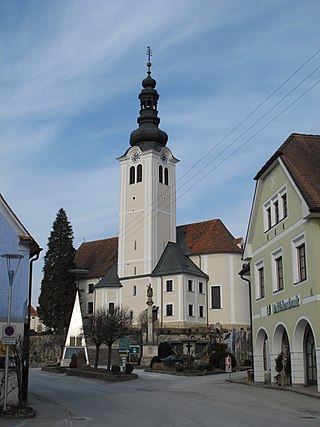
Sankt Ruprecht an der Raab is a market town with 5,421 residents in the district of Weiz in Styria, Austria. In the Styria municipal structural reform on 1 January 2015, the town was merged with the nearby towns Etzersdorf-Rollsdorf and Unterfladnitz.

Sankt Barbara im Mürztal is since 2015 a market town in Styria, Austria, with 6,726 inhabitants in the judicial district of Mürzzuschlag and in the political district of Bruck-Mürzzuschlag in Styria. As part of the municipality structural reform in Styria, the municipality, which was founded on 1 January 2015, was formed by the merger of the independent municipalities:
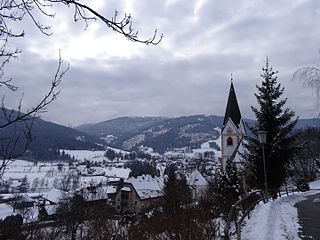
Sankt Georgen am Kreischberg is since 2015 a municipality in Murau District in Styria, Austria. It was created as part of the Styria municipal structural reform, out of the former independent towns Sankt Georgen ob Murau and Sankt Ruprecht-Falkendorf. The town church after the changes, which began in November 2013, had continued the name "Sankt Georgen ob Murau", which was corrected through an amendment in April 2014.

Pölstal is a market town since 2015 in the Murtal District of Styria, Austria.

Stadl-Predlitz is a municipality since 2015 in the Murau District of Styria, Austria.






















